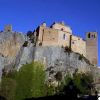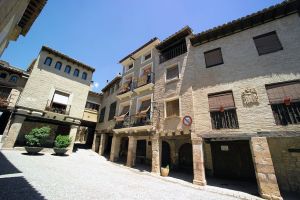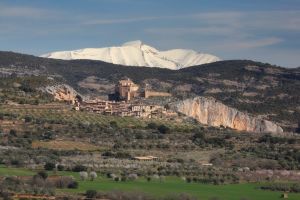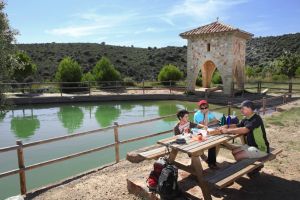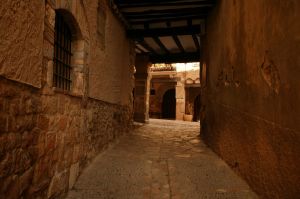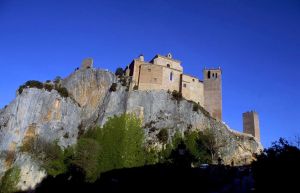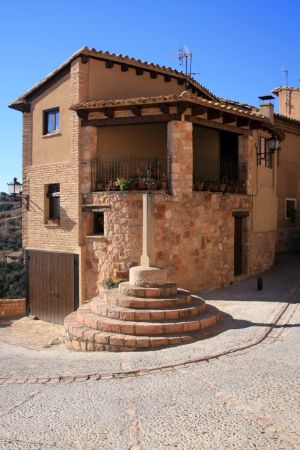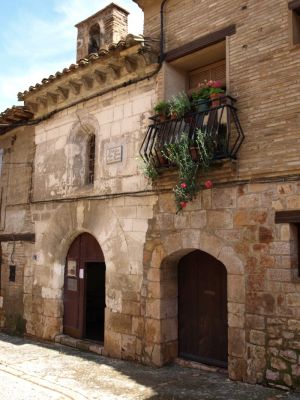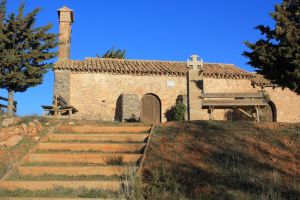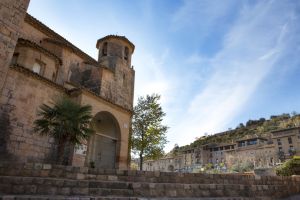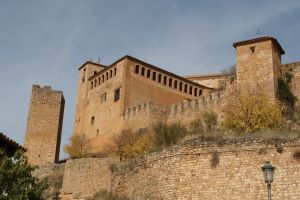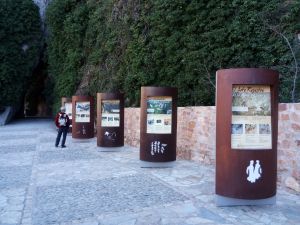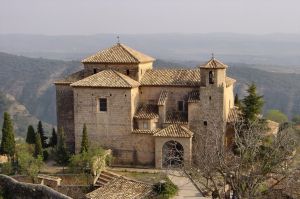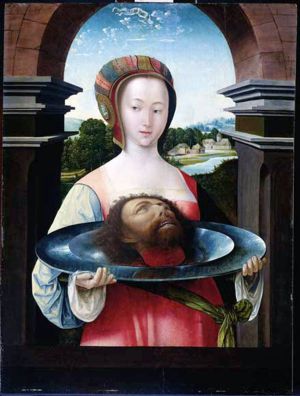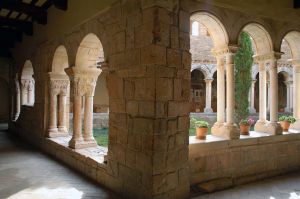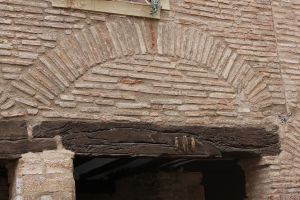There are no remains of the fortress that Jalaf ibn Rasid commissioned at the beginning of the 9th century, except the actual location. He could not have chosen a better spot; on the highest part of a rock surrounded by sheer vertical cliffs carved by the River Vero, the fortress had a single access, which was defended by strong towers and thick walls.
When the building fell into Christian hands in 1067 during the reign of Sancho Ramirez, Abbot Banzo fortified the old Muslim castle. The king showed his appreciation by thanking him for “the good service you have done and always do and for building that tower in Alquézar for the dissemination of Christianity and the disgrace of the Moors.”
The ruins of a rectangular tower can still be seen on the highest part of the hill. Its thick walls (1.6 metres wide) were made from ashlars, and many of these were reused in walls placed to protect the almond trees of the orchard belonging to Mosen Rafael Ayerbe.
From this era there are remains of a small chapel dedicated to Santa Maria Magdalena, which had a square east end and barrel vault. These are also found on the highest part of the rocky promontory.
Access is gained by a series of successive steep ramps in the form a dog leg, which are protected by a watch tower. Building the tower outside the primitive walls of the enclosure gave a better defensive vantage point. Its construction on rock must have been a risky venture but was successfully and efficiently resolved by a group of local craftsmen who copied the magisterial method of building employed by Lombard constructors. The door was set high to further enhance protection and was reached via a wooden structure that can no longer be seen. The merlons that made up the battlements were no more than openings at the highest part of the construction where scaffolds were placed, that is to say the wooden bastion that completed the defence.
Between the 15th and 16th centuries the castle was again fortified with zigzag access to the hill via a series of crenellated walls and a blazoned doorway. On the other side was a large Gothic door with bas-relief, which was popularly know as the La Mazmorra de las Santas. This bas-relief dates back to the 15th century and shows the figures of the saints, Nunilo and Alodia, taking the hand of a martyr at the moment of their death at the hands of their executioners.




